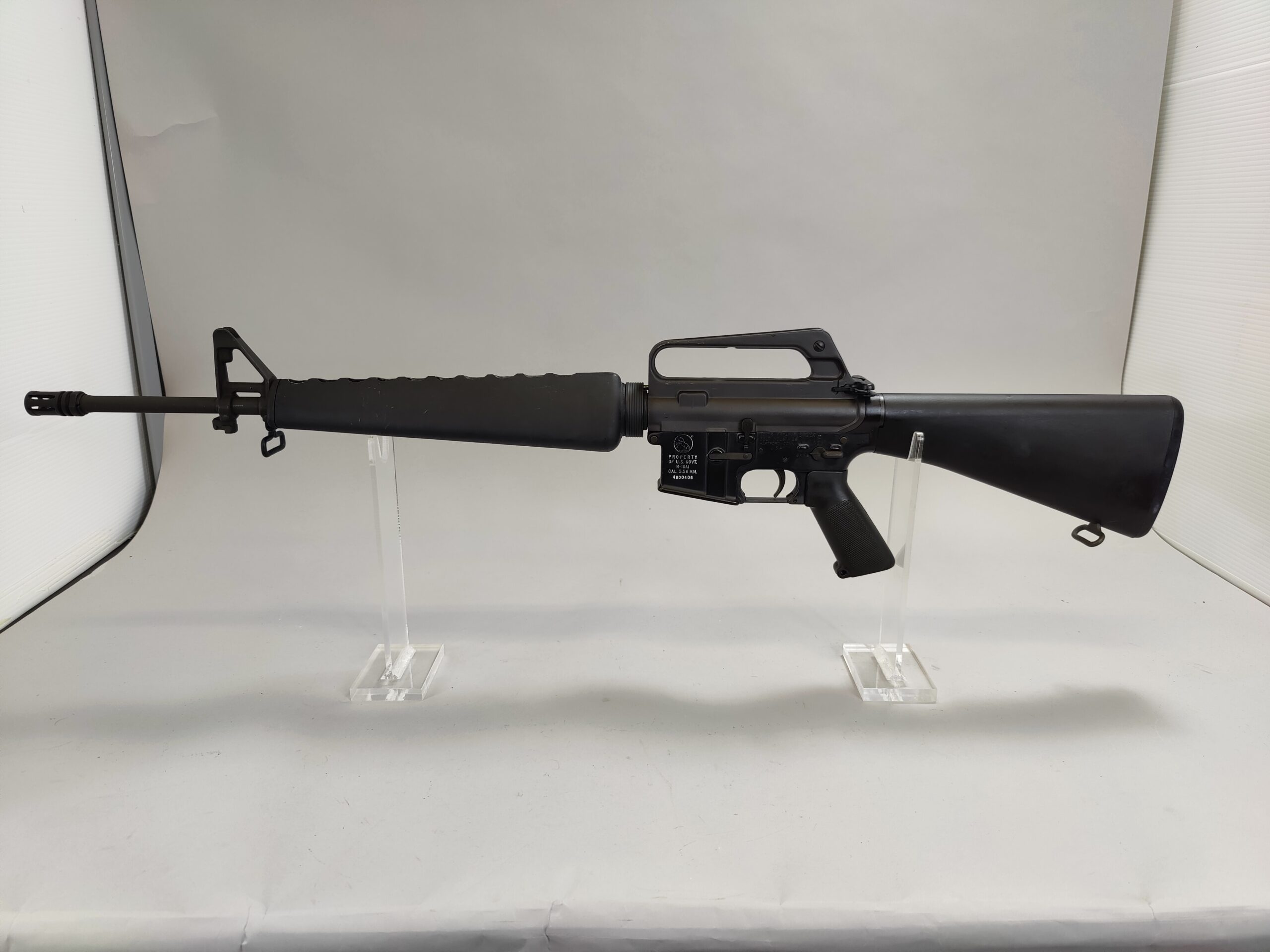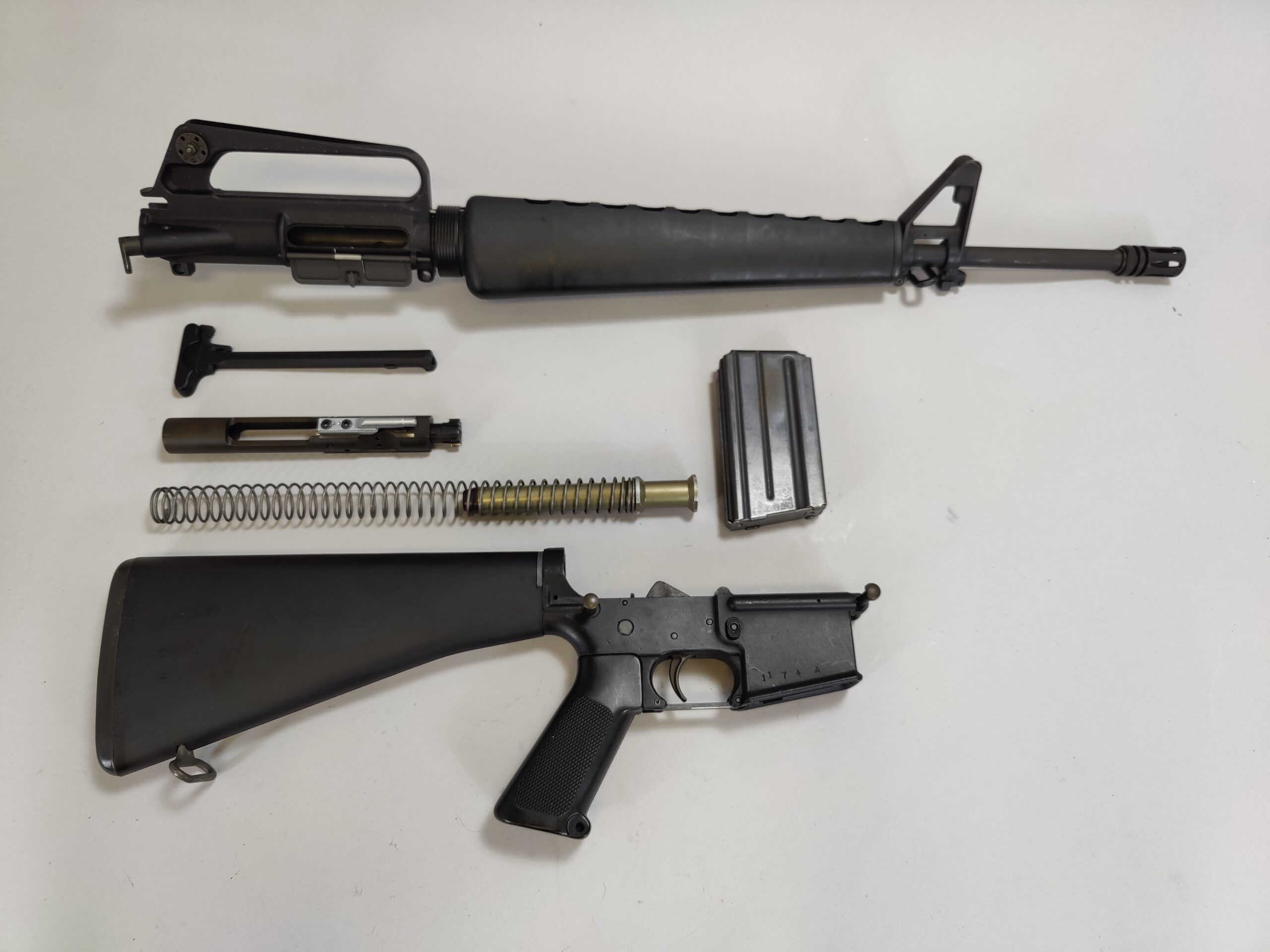
This is My Rifle: M16A1
By: Sam LichtmanPosted on July 18, 2025
Technical Data
Weight: 6 lbs. 12 oz. w/ empty magazine
Overall Length: 38 ½”
Barrel Length: 20”
Chambering: 5.56×45 mm M193
Feed System: 20-round detachable box magazine
Operating System: Select-fire, hybrid direct-impingement/internal piston
Rate of Fire: 700-800 rounds per minute cyclic,
45-200 rounds per minute effective, 12-15 rounds per minute sustained
Muzzle Velocity: 3,150 feet per second
Range: 460 m effective
Description
Designed in the late 1950s by ArmaLite, a division of Fairchild Engine and Airplane Company, the M16 was a cutting-edge rifle for its time; its aluminum receivers and polymer furniture make it extremely lightweight, especially as compared to contemporary military arms. With its shoulder stock positioned in line with the barrel and bolt carrier, the M16’s soft recoil impulse is directed straight back into the shooter’s shoulder, minimizing the muzzle’s tendency to rise during rapid fire. The M16 has good ergonomics, with all its primary controls conveniently located to allow the shooter to manipulate them without removing his or her firing hand from the pistol grip.
The M16’s self-loading action is powered by gas tapped from a port under the combination gas block/front sight tower and vented back into the bolt carrier through a thin stainless steel gas tube positioned just above the barrel. The gas expands and cools inside the bolt carrier, contained by three gas rings on the bolt stem, driving the bolt carrier back, which in turn unlocks the bolt and cocks the hammer. After the spent casing is extracted and ejected, the buffer spring located in the stock pushes the bolt carrier group forward again, picking up a new round from the top of the magazine, pushing it into the chamber and returning the bolt to battery.
Although gas is vented from the barrel into the receiver, the M16 is unlike “true” direct-impingement rifles in that the gas does not act directly on the bolt carrier. The bolt carrier’s internal expansion chamber acts much like the piston in an M14 rifle or M60 machine gun, giving rise to the technical term “internal piston” for this unique operating mechanism.
A military M16 is different from a civilian AR-15 principally in the design of its fire control group. When the fire selector is in the “AUTO” position, the action of the bolt carrier returning forward pushes on the automatic sear, which releases the hammer to fire the rifle again. This process repeats continuously, as long as the trigger is depressed.
Development and Service History
The AR-15/M16 platform’s military service began in the early 1960s, when the Air Force placed what was expected to be a one-time order of 8,500 rifles to replace its security forces airmen’s aging and obsolete M2 carbines. Defense Secretary Robert McNamara also authorized a small purchase of AR-15s for field testing with Military Assistance Command, Vietnam – Studies and Observations Group. Due to promising results in combat, chronic production delays with the M14 and increasing tensions in Vietnam, the AR-15 was put into full trials and quickly adopted as the M16.
Weighing some 2 pounds less than the M14 and with a 5-inch-shorter overall length, the M16 was much more maneuverable in the tight confines of Vietnam’s jungles. Its lighter ammunition and substantially softer recoil allowed infantrymen to send more rounds downrange, better equipping them to repulse ambushes and win firefights. Early M16s, however, suffered from corrosion and poor reliability in the jungle environment, leading to a public scandal and Congressional investigation. The XM16E1 and M16A1 implemented features including a fully chrome-lined barrel and chamber, an improved buffer to reduce bolt carrier velocity, and a forward assist, which allows a shooter to force the bolt into battery when the chamber is fouled. After its early deficiencies were corrected, the M16 proved to be a highly effective weapon and became one of the most widely used military rifles in the world. The M16A1 was the Army and Marine Corps’ standard long arm until the M16A2’s adoption in 1982 and persisted in limited service for years thereafter.
Executive Editor’s note: To read a more comprehensive history of the M16, see “From the Hill Fights in Vietnam to Today: The History of the M16” by Sam Lichtman in the October 2021 issue.





